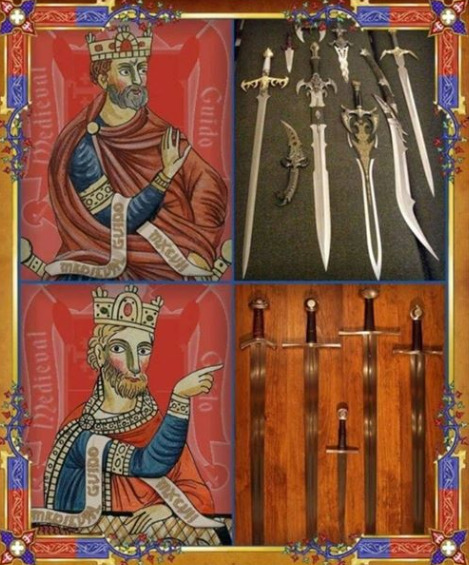ubercharge: petermorwood: literallybyronic: ubercharge: look. look at this beautiful sword meme. i&r
ubercharge:petermorwood:literallybyronic:ubercharge:look. look at this beautiful sword meme. i’m going to cry@petermorwoodI saw and reblogged this one a while back, but it’s always worth repeating, and this time I’m adding a bit of background info comparing common fantasy sword features to the Real Thing (with pictures, of course.) Leaf-bladed swords are a very popular fantasy style and were real, though unlike modern hand-and-a-half longsword versions, the real things were mostly if not always shortswords.Here are Celtic bronze swords… …Ancient Greek Xiphoi… … and a Roman “Mainz-pattern” gladius…Saw or downright jagged edges, either full-length or as small sections (often where they serve no discernible purpose) are a frequent part of fantasy blades, especially at the more, er, imaginatively unrestrained end of the market. Real swords also had saw edges, such as these two 19th century shortswords, but not to make them cool or interesting. They’re weapons if necessary……but since they were carried by Pioneer Corps who needed them for cutting branches and other construction-type tasks, their principal use was as brush cutters and saws.This dussack (cutlass) in the Wallace Collection is also a fighting weapon, like the one beside it……but may also have had the secondary function of being a saw. A couple of internet captions say it’s for “cutting ropes” which makes sense - heavy ropes and hawsers on board a ship were so soaked with tar that they were often more like lengths of wood, and a Hollywood-style slice from the Hero’s rapier (!!) wouldn’t be anything like enough to sever them. However swords like this are extremely rare, which suggests they didn’t work as well as intended for any purpose.I photographed these in Basel, Switzerland, about 20 years ago. Look at the one on the bottom (I prefer the basket-hilt schiavona in the middle).A lot of “flamberge” (wavy-edge) swords actually started out with conventional blades which then had the edges ground to shape - the dussack, that Basel broadsword and this Zweihander were all made that way. The giveaway is the centreline: if it’s straight, the entire blade probably started out straight. Increased use of water power for bellows, hammers and of course grinders made shaping blades easier than when it had to be done by hand. This flamberge Zweihander, however, was forged that way. Again, the clue is the centre-line.Incidentally thoseParierhaken (parrying hooks - a secondary crossguard) are among the only real-life examples of another common fantasy feature - hooks and spikes sticking out from the blade.Here are some rapiers and a couple of daggers showing the same difference between forged to shape and ground to shape. The top and bottom rapiers in the first picture started as straights, and only the middle rapier came from the forge with a flamberge blade.There’s no doubt about this one either. The reason - though that was a part of it - wasn’t just to look cool and show off what the owner could afford (any and all extra or unusual work added to the price) but may actually have had a function: a parry would have been juddery and unsettling for someone not used to it, and any advantage is worth having. However, like the saw-edged dussack, flamberge blades are unusual - which suggests the advantage wasn’t that much of an advantage after all.Here’s a Circassian kindjal, forged wiggly……and an Italian parrying dagger forged straight then ground wiggly…There were also parrying daggers with another fantasy-blade feature, deep notches and serrations which in fantasy versions often resemble fangs or thorns.These more practical historical versions are usually called “sword-breakers” but I prefer “sword-catcher”, since a steel blade isn’t that easy to break. Taking the opponent’s blade out of play for just long enough to nail him works fine.NB - the curvature on the top one in this next image is AFAIK because of the book-page it was copied from, not the blade itself.The missing tooth on that second dagger, and the crack halfway down this next one’s blade, shows what happens when design features cause weak spots.So there you go: a quick overview of fantasy sword features in real life. Here’s a real-life weapon that looks like it belongs in a fantasy story or film - and this doesn’t even have an odd-shaped blade…Just a very flexible one…If you want more odd blades, Moghul India is a good place to start…i could not ask for a better addition to my meme post than blade education thank you so much -- source link
Tumblr Blog : ubercharge.tumblr.com
#excellent post#swords
